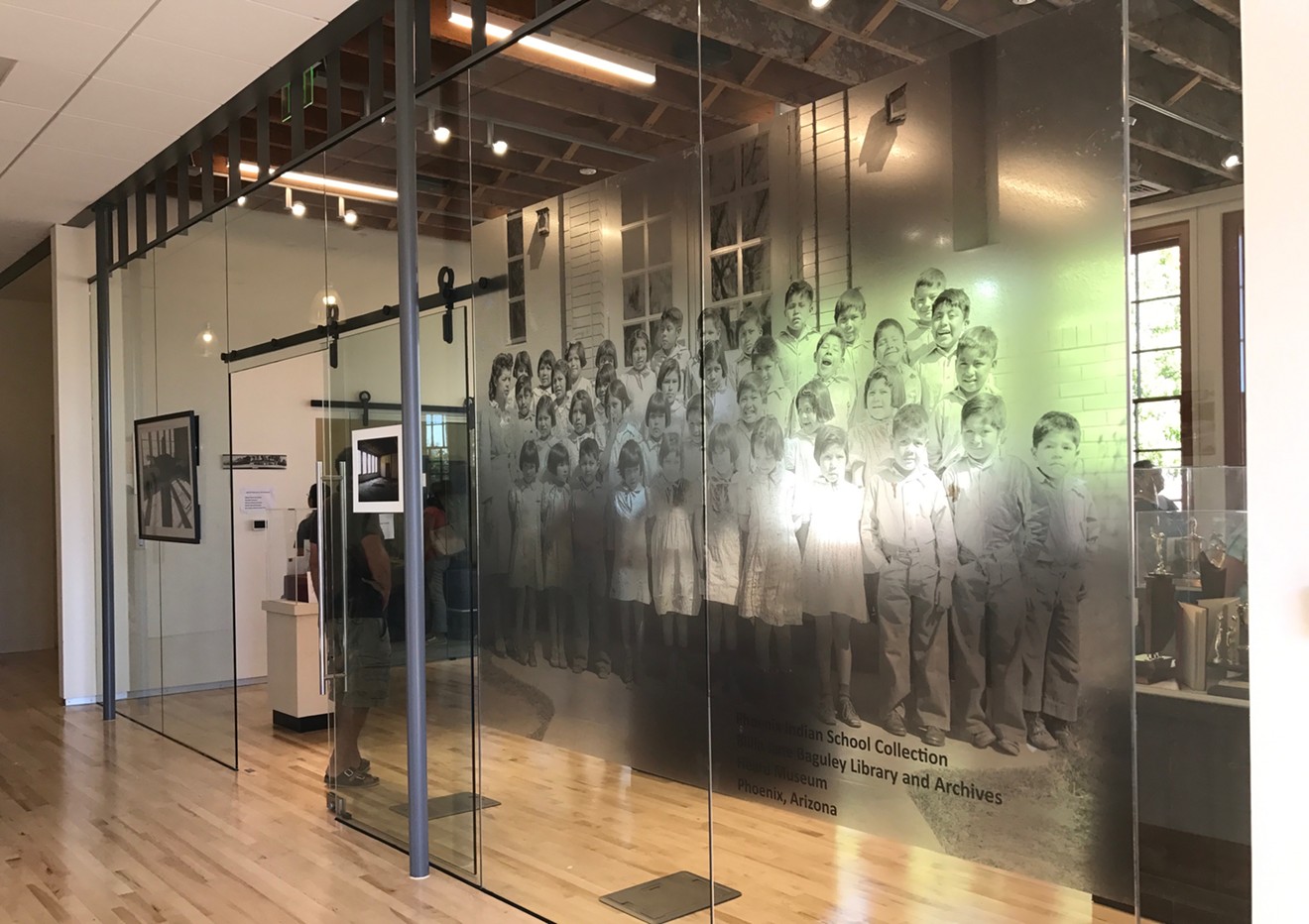The official opening event, which included a parade, tours, and remarks by Phoenix Mayor Greg Stanton, took place on Saturday, October 14.
The 6,000-square-foot center includes a gallery and commercial-grade kitchen, as well as space for classes, meetings, and community events.
Currently, the center's open by appointment and during special events, according to Patty Talahongva, community development manager for Native American Connections. She attended Phoenix Indian School as a high school student.
The center is located inside the one-time music building for the Phoenix Indian School, which was founded as the Phoenix Indian Industrial School in 1891.
It was operated by the federal government's Department of the Interior and the Bureau of Indian Affairs.
The institution housed thousands of students from more than 20 tribes in Arizona, California, Nevada, New Mexico, and Oregon. Its aim was to assimilate students.
The music building first served as an elementary school when it was constructed in 1931. Starting in 1964, it was used as a band and chorus facility.
Initially, the school enforced strict rules that governed language and appearance, and prevented students from exercising elements of their own cultures. Many of those practices waned by the time it closed in 1990.
That’s the year the Bureau of Land Management turned the property over to the city of Phoenix. The property became Steele Indian School Park, which opened in 2001.
That same year, the former music building, the adjacent Memorial Hall, and the Phoenix Indian School were placed on the National Register of Historic Properties.
“The center will help people learn about the history of the site before it became a park,” Talahongva says.

Entrance to the Phoenix Indian School Visitor Center during the October 14 grand opening.
Lynn Trimble
In November 2013, Native American Connections and Phoenix Indian Center signed an agreement with the city of Phoenix to renovate the music building.
Both nonprofits provide a variety of health and human services for Native Americans here in the Valley.
Initial efforts included gathering community input, securing design plans, and raising money for renovations.
Talahongva says the construction costs for renovating the center came to about $1.5 million. They spent another $400,000 on architectural costs, information technology, furniture, equipment, and commercial kitchen equipment.
Now those renovations are done, and Talahongva is pleased with the results.
“The first time I walked in the doors, I was struck by the beauty of the building,” she says of getting her first glimpse after the renovations were completed. “Nothing prepares you for that.”
The center includes several glass walls, original floorboards, and restored wooden ceiling beams.
“It’s not just the new beauty, it’s the old beauty,” Talahongva says.
The gallery is one of the first spaces visitors seeing when they enter the center.
Currently, it’s filled with artifacts that reflect the former students’ many athletic and musical endeavors. Newspaper clippings dot gallery walls, and mannequins wear historic team clothing.
But that will change over time, Talahongva says.
For example, they’re working on technology for sharing interviews conducted with Phoenix Indian School alumni, so people can learn the history of the school from people who lived it. Currently they're working to raise $100,000 toward that effort.
In addition to regular programming, such as lectures and classes, the center provides spaces that community groups can rent for their own events and programs. “We want everyone to feel welcome here,” she says.
Those spaces include a conference style meeting space that holds up to 120 people, a classroom space for 45 people, a board room that accommodates 12 people, and a commercial kitchen.
Talahongva hopes that people who use the center will gain a greater understanding of its history.
“Millions of people drive up and down Indian School Road every year and have no idea what it’s named for or the history behind it,” she says. “We want to change that.”
But there’s something else Talahongva wants visitors to take away from the center.
“The U.S. government tried to take away our identity and our culture,” she says. “But American Indians are resilient, and we’re still here.”












